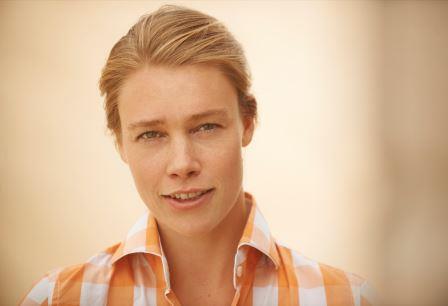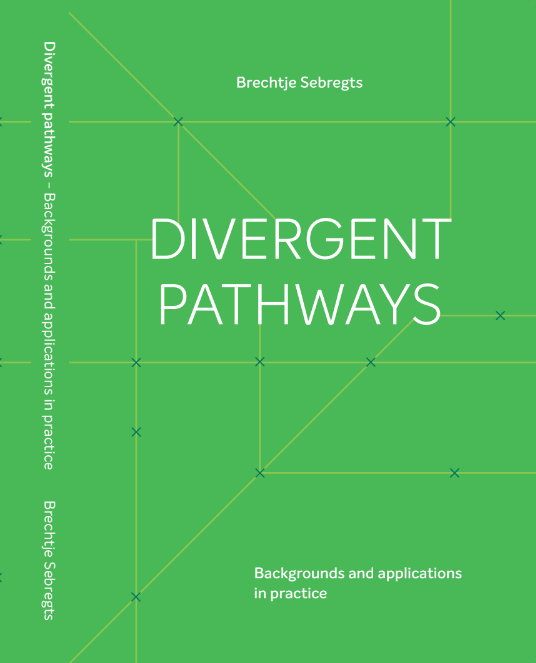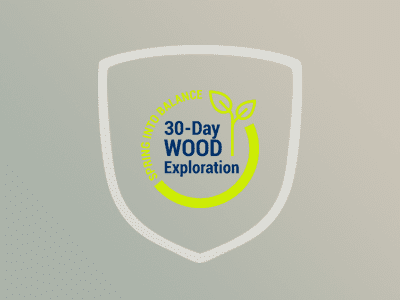This is an excerpt from Brechtje Sebregts’s Book Divergent Pathways. You can order a copy here.
Large Intestine
The course of the divergent pathway of the Large Intestine
Chapter 11 of the Ling Shu describes the course of the divergent pathway of the Large Intestine as follows:
The primary of the hand yang ming travels from the hand to the breast. A divergence at the shoulder joint enters the neck bone. From here it descends to the large intestine, homing into the lungs. It then ascends and travels toward the throat to emerge at the supraclavicular fossa to unite with the yang ming.
(Chace & Shima, 2005, p. 30)
Acupuncture points of the divergent pathway of the Large Intestine
• lower confluence point: Large Intestine 11
• upper confluence point: Large Intestine 18
• trajectory points: Large Intestine 15, Du Mai 14, Lung 1, Stomach 15, Stomach 12, Stomach 25
Step-by-step plan
Step 1 Needle the lower confluence point Large Intestine 11 on the left, then on the right. Then, repeat the process for the upper confluence point Large Intestine 18 on the left, then on the right.
Step 2 Use appropriate trajectory points for the pathology being treated. Use one or two trajectory points for the treatment. Select the point(s) based on the location of the complaint, the results of the palpation and information gleaned from talking with the patient. In this way, the trajectory point(s) that corresponds to the patient’s current needs can be determined.
Step 3 If tension develops on the pulse during the treatment of the divergent pathway, needle the jing-well point Large Intestine 1.
Lower confluence point of the divergent pathway of the Large Intestine
Large Intestine 11 qūchí – ‘pool at the crook’
Skin complaints such as dry or flaky skin or itching caused by damp, heat or fire can be treated with this point, which cools blood, clears heat and damp and reduces itching. Large Intestine 11 is also an important point for the treatment of complaints of the arm, such as pain of the elbow, unilateral paralysis of the arm accompanied by the inability to close one’s hand, immobility and pain of the elbow and shoulder or redness and swelling of the arm. The point regulates qi and blood.
As a point of the divergent pathways of the Large Intestine, Large Intestine 11 is not used to treat mental-emotional complaints.
Trajectory points
Large Intestine 15 jiānyú – ‘shoulder bone’
Due to its location, Large Intestine 15 is often used as a trajectory point for shoulder and arm complaints such as stiffness, pain, immobility, weakness of the shoulder and numbness in the upper arm. It promotes the movement of qi and blood in the upper arm and shoulder.
The restriction of movement and pain can be analogous to being stuck in grief or loss. Large Intestine 15 brings movement. Letting go is a process of recognition, acknowledgement and acceptance. The patient must recognise that sadness or pain are inevitable after a loss and that they should not look away. If they can do this, then they have an opportunity to accept the loss and move on from it. Letting go of the past becomes possible with Large Intestine 15.
Du Mai 14 dàzhui – ‘great hammer’
As a trajectory point of the divergent pathway of the Large Intestine, Du Mai 14 is not used to treat physical complaints.
For mental-emotional complaints, the point can be used like a hammer when the patient is stuck or experiences persistent negative emotions (e.g., they feel gloomy or depressed and have started to behave accordingly). The patient may no longer spend time with others or engage in fun activities because they do not derive enjoyment from them. Du Mai 14 can be used to break down these behavioural patterns or stiffened relationships. The goal is for the patient to re-engage, see people again and discover that life has much to offer.


Lung 1 zhōngfŭ – ‘middle palace’
Lung 1 makes qi descend and clears the chest in case of complaints such as coughing, shortness of breath, coughing blood and pus, wheezing and
chest pain.
Persistent sadness may obstruct the descending movement of qi. Shallow breathing or feeling short of breath indicates that the patient is unable to let go of their grief and loss. As a result, there is no room to let in anything new. In addition, sadness can lead the patient to no longer make new contacts because they are aware that there is much to lose. Lung 1 softens this feeling of isolation and alleviates sadness that has persisted for too long. The patient’s chest feels free and their breathing becomes normal again; they can take the first steps towards the energy-consuming work of processing.
Stomach 15 wuyì – ‘room screen’
The divergent pathway of the Large Intestine makes contact with the Lung. This point is not used to treat physical complaints of the Large Intestine but of the Lung.
The point allows rebellious qi to descend and clears the chest to alleviate coughing, wheezing, shortness of breath and chest pain.
Just as a screen divides a room and creates a feeling of privacy, Stomach 15 offers protection when the patient cannot extricate themselves from the needs of others. Pressure on the chest is often felt when there is not enough space for their own needs and feelings. Stomach 15 enables the patient to protect themselves from external stimuli and the emotions of others to allow room for their own needs and feelings.
Stomach 12 quēpén – ‘empty basin’ or ‘broken bowl’
Stomach 12 is used to resolve stagnation, which can lead to shoulder pain that radiates to the neck, deafness and upper arm pain and inability to raise the arm.
Stomach 12 also allows Lung-qi to descend in cases involving the chest and upper burner complaints, including coughing, shortness of breath, fullness in the chest and swollen glands.
The bowl is broken and the life energy flows away. When palpating this point, practitioners may feel a lack of muscle tone and often perceive a void. The patient begs for compassion and support. To determine the cause of this behaviour, ask the patient what broke their bowl. Often it is a situation that the mind can no longer digest. In this case, it can be the loss of a loved one. The self-image has collapsed. Stomach 12 is used to stick the bowl, so that the patient can collect their life energy and use it to resume life.
Stomach 25 tianshu – ‘celestial pillar’
Stomach 25 regulates qi of the intestines and removes stasis in the lower burner. Stomach 25 can be used for complaints such as diarrhoea, borborygmi, constipation and abdominal pain.
A pillar provides strength and a solid foundation. Thus, this point provides the patient with a stable centre in case of excessive worry. This prevents the patient from losing their grounding. From that stable centre, they can orientate themselves and continue along their life path.
The upper confluence point of the divergent pathway of the Large Intestine
Large Intestine 18 fútú –‘support the prominence’
Tú refers to the larynx. Due to its location, Large Intestine 18 is suitable for treating throat complaints and vocal cords, such as a swollen or sore throat, difficulty swallowing or rattling in the throat. It also relieves coughing and wheezing.
Large Intestine 18 can be used when the patient is unable to express feelings of sadness or when these emotions are suppressed. Unexpressed feelings and suppressed emotions then come to a build-up at Large Intestine 18. Signs of a build-up include a tinny, hoarse or broken voice, mucus in the throat and frequent coughing. It is important to determine why the patient cannot express their sadness. Perhaps they do not believe that they will encounter the new if they let go of the old. Large Intestine 18 enables them to do so.
In the void that exists when they let go of the old, there is room for something new. The focus on the past changes to a focus on the present and living life again. The patient breaks free from their stagnation and opens themselves to transformation and change.
Cathy, age 54
When Cathy entered my practice, I noticed that she has considerable redness on her face, near her nose. She said that it was not only the skin on her face that was red and chapped. She pulled up her sleeve and showed me a large, similarly red and dry spot on her right wrist, around Large Intestine 5. ‘It’s really bad now’, she said, which led me to conclude that there were periods when her skin issues were less severe.
Cathy did not know what caused her skin to worsen. After some thought, she mentioned her work. She had been self-employed for four years and worked alongside two other women. Their working relationship was turbulent. ‘That’s how it goes, unfortunately’, she said.
It was not only Cathy’s skin that was bothering her. Her nasal passages were full of mucus at times –sometimes for a period of days, other times for a period of several weeks. In addition, Cathy had been constipated for several months. Every four to five days, she had strong-smelling stools, which had occurred in other periods in her life. Cathy had bowel movements only once every four to five days for a few weeks; this would then revert to every one or two days.
Due to the location and intermittent nature of her symptoms, the divergent pathway of the Large Intestine came to mind. This was confirmed through diagnostic methods. It became clear to me that asking further questions would not be very productive. Cathy made a rigid first impression; I decided to see whether I could stimulate movement in her Large Intestine first. Whilst assessing the essences, I noticed a deficiency of qi. It was plausible that qi in the Large Intestine did not sufficiently move. Thus, I used Ren Mai 6 to tonify qi and the mu point of the Large Intestine, Stomach 25, to move qi in the colon. Then, I added the divergent pathway of the Large Intestine.
Step 1
First, I needled the two lower confluence points: Large Intestine 11 on the left and Large Intestine 11 on the right. Then, I needed the two upper confluence points: Large Intestine 18 on the left and Large Intestine 18 on the right.
Step 2
I did not use trajectory points in this treatment, as they would not have added anything.
Locally, I used Large Intestine 20 to relieve Cathy’s congested nose. I explained at the end of the treatment how she could massage Large Intestine 4 herself. Worsley nicknamed this point ‘the great remover’ because of its powerful clearing effect on blockages of the Large Intestine, which removes toxins and other waste.
Two weeks later, I saw Cathy again. The conversation turned to the red and dry spots on her skin. I explained that the redness and warmth that she experienced had to do with the waste and toxins in her body. An appropriate metaphor would be a full rubbish bin that cannot be emptied. As a result, the bin stinks and the rubbish rots. Cathy’s constipation was the physical manifestation of that full bin. I cautiously brought up the topic of work. Cathy admitted that clung to the past in the form of people or objects that she could not let go of to make way for something new. She had clung to certain work relationships and assignments for far too long, some of which she had wanted to end a while ago. She knew that the situation was not healthy for her. As an argument, Cathy said that she knows what she got and if she let that go, she did not know anymore. This thought prevents her from seeing new possibilities and new sources of inspiration.
I started with the Du Mai, Small Intestine 3 on the right and Bladder 62 on the left. Then, Cathy could stand on her own feet with a straight back and show who she was and what she wanted. Full of yang, the Du Mai gave her movement and firmness. I used the Du Mai together with the divergent pathway of the Large Intestine. I added Du Mai 14 ‘great hammer’ as a trajectory point. The point can be used like a hammer, which enabled Cathy to consider the possibility of working with other people. I added Stomach 25 ‘celestial pillar’ to provide Cathy with a stable centre from which to break down calcified patterns and relationships, enabling her to can continue to grow and develop.
In the four treatments that followed, I worked with Cathy on stimulating movement in the Large Intestine. She talked to her colleagues and shared her qualms about their working relationship. She indicated that she would finalise her work and look for another job. She does not want to continue as she had before. The redness on her face and right wrist was barely visible. The constipation had improved, but we continued to work on it. The rhythm and peristaltic movement of taking something up and letting go gradually returned.

In her book, Brechtje Sebregts describes the background and development of the use of the divergent pathways. She also outlines her methodology for incorporating the divergent pathways into your treatment approach. This book contains clear step-by-step plans, with extensive explanations of the acupuncture points needed to treat physical and mental-emotional complaints.
Brechtje Sebregts is an acupuncturist and teacher of Chinese medicine.
She specialises in the treatment of psychosomatic complaints. The individual is central to her practice and lectures. Brechtje works with each patient to see their potential and enable them to further grow and develop.





